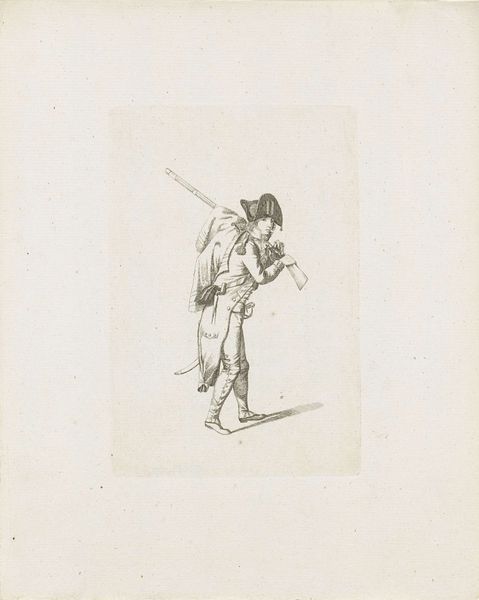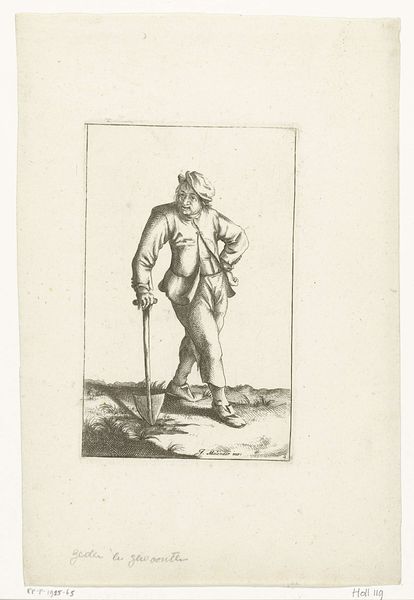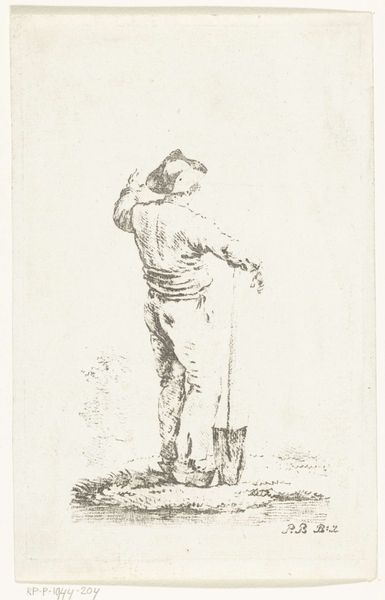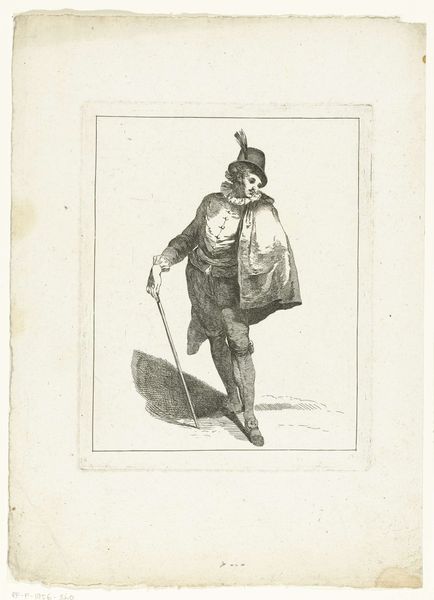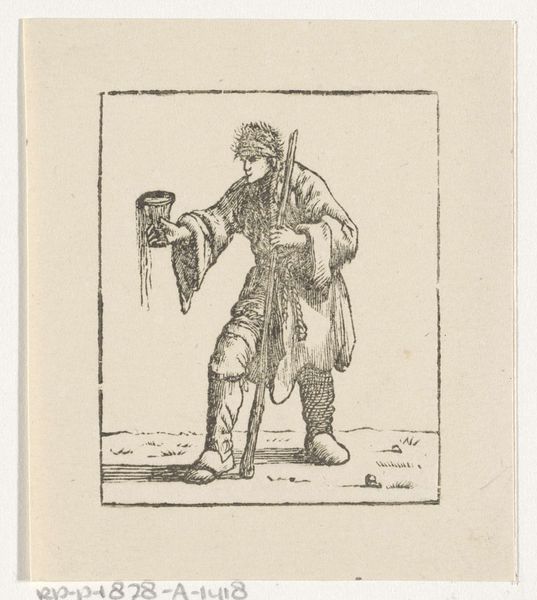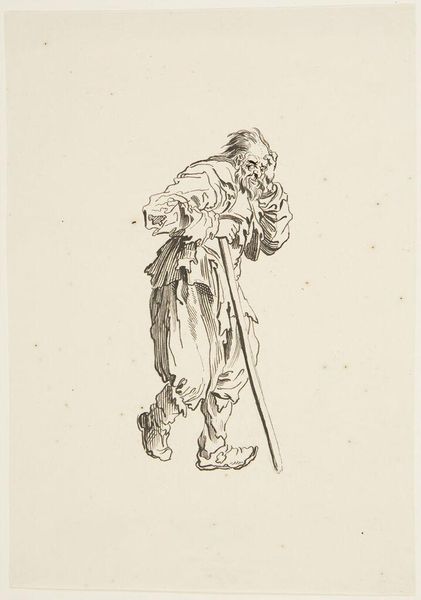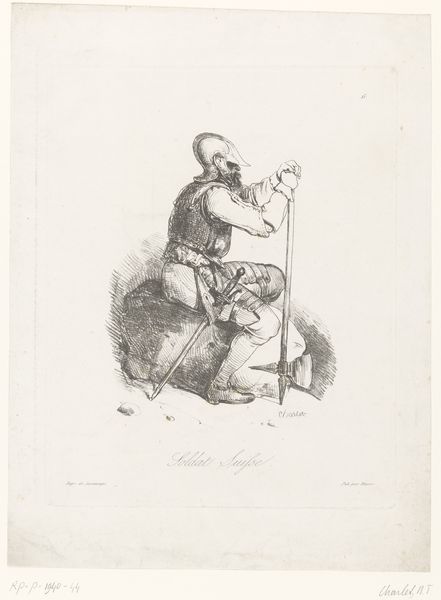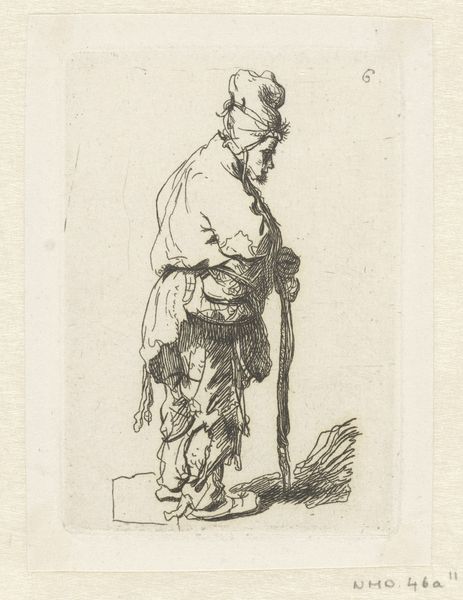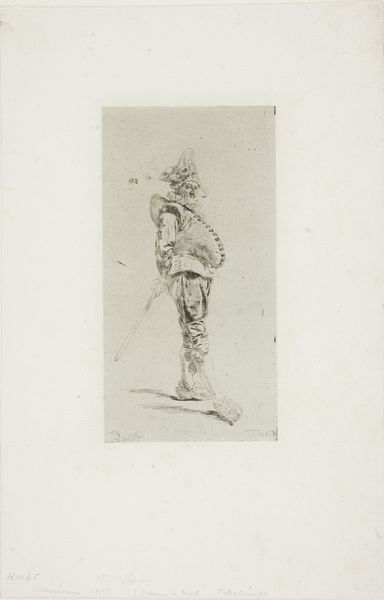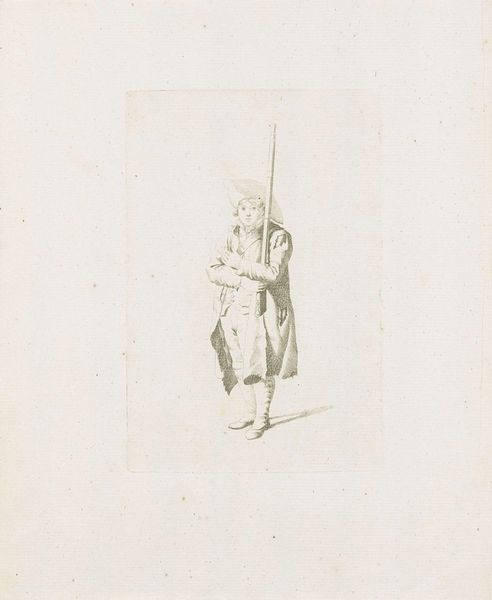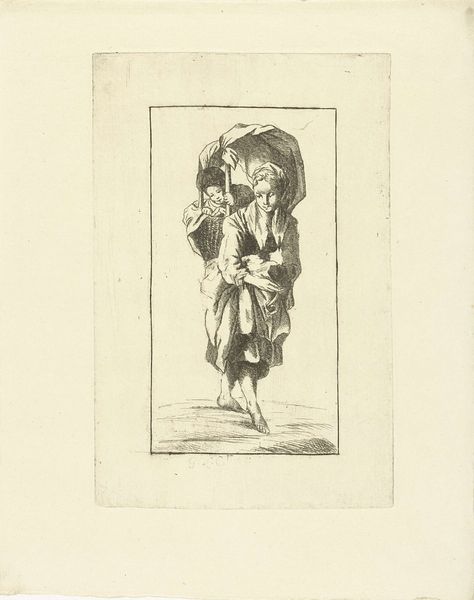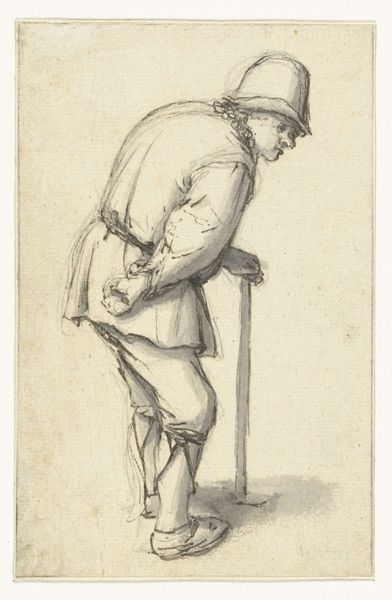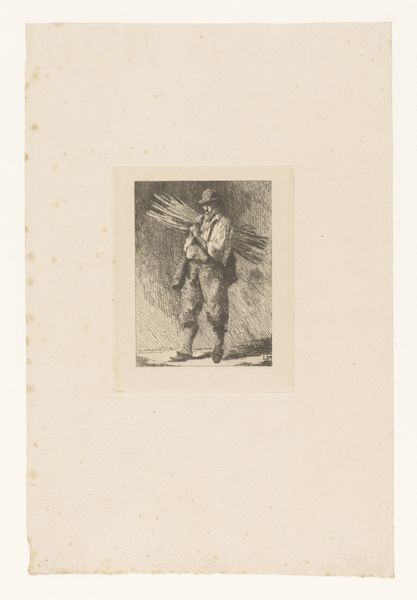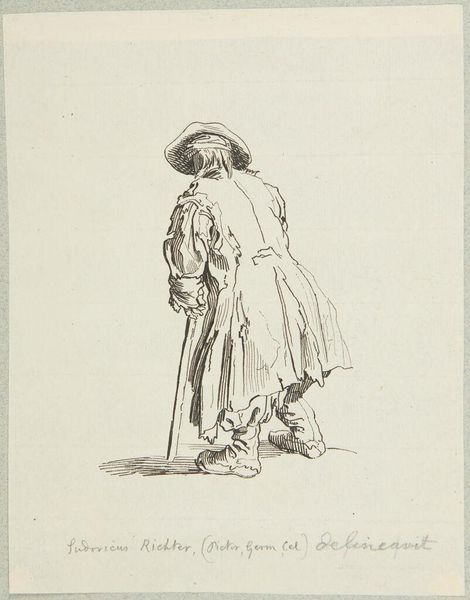
print, glass, engraving
#
portrait
#
dutch-golden-age
# print
#
glass
#
genre-painting
#
engraving
Dimensions: height 145 mm, width 91 mm
Copyright: Rijks Museum: Open Domain
Curator: Here we have Cornelis Danckerts' print, "Boer met glas in de hand en stok," or "Farmer with Glass in Hand and Stick," created sometime between 1613 and 1656. Editor: The mood strikes me as immediately pensive. The etching creates a sense of introspection despite its plain presentation. Curator: Considering the time, it makes sense to connect that mood to its probable Dutch Golden Age context. The man’s clothing suggests modest means. The laboring classes were developing, acquiring their own traditions of artistry that emphasized material conditions. Editor: And what about the glass he holds? It’s difficult to miss. It suggests contemplation, perhaps escape from daily hardship, doesn't it? The act of drinking itself can be loaded with meaning: celebration, mourning, a ritual of sorts. And consider that accompanying staff! A kind of walking companion through life. Curator: It’s interesting you see the glass that way! To me, the glass in this work feels quite...mundane. Perhaps intentionally ordinary to avoid idealizing the man himself. The emphasis is on representing him as he likely was, tied to daily activities, not symbols of virtue. It is also a relatively low print run I would imagine, so, how does this inform his access to that time, as you suppose it? Editor: But does the artist escape symbolism? The placement of the glass close to the man’s face draws our eyes in – it becomes more than just a drinking vessel, almost an extension of his thoughts. Plus, if the feather is any indication of a former life, we can suggest this drink also as a memory to the life he once knew. And doesn't that simple staff denote so much with what is is, which is his mode of transience? His very presence seems a visual meditation on labor versus leisure in Dutch society. Curator: It is important to look closely to better consider the context, so thank you for drawing attention to that! Danckerts, I think, created this scene in direct reference to a working class who has little, as a piece about the working conditions in this Era. But with our different approaches, we get a greater overall experience that I am quite happy to know you have added so. Editor: And thank you, you reminded me of just how material conditions give meaning to what may appear symbolically striking at first. It's through seeing both that the artwork really comes alive.
Comments
No comments
Be the first to comment and join the conversation on the ultimate creative platform.
